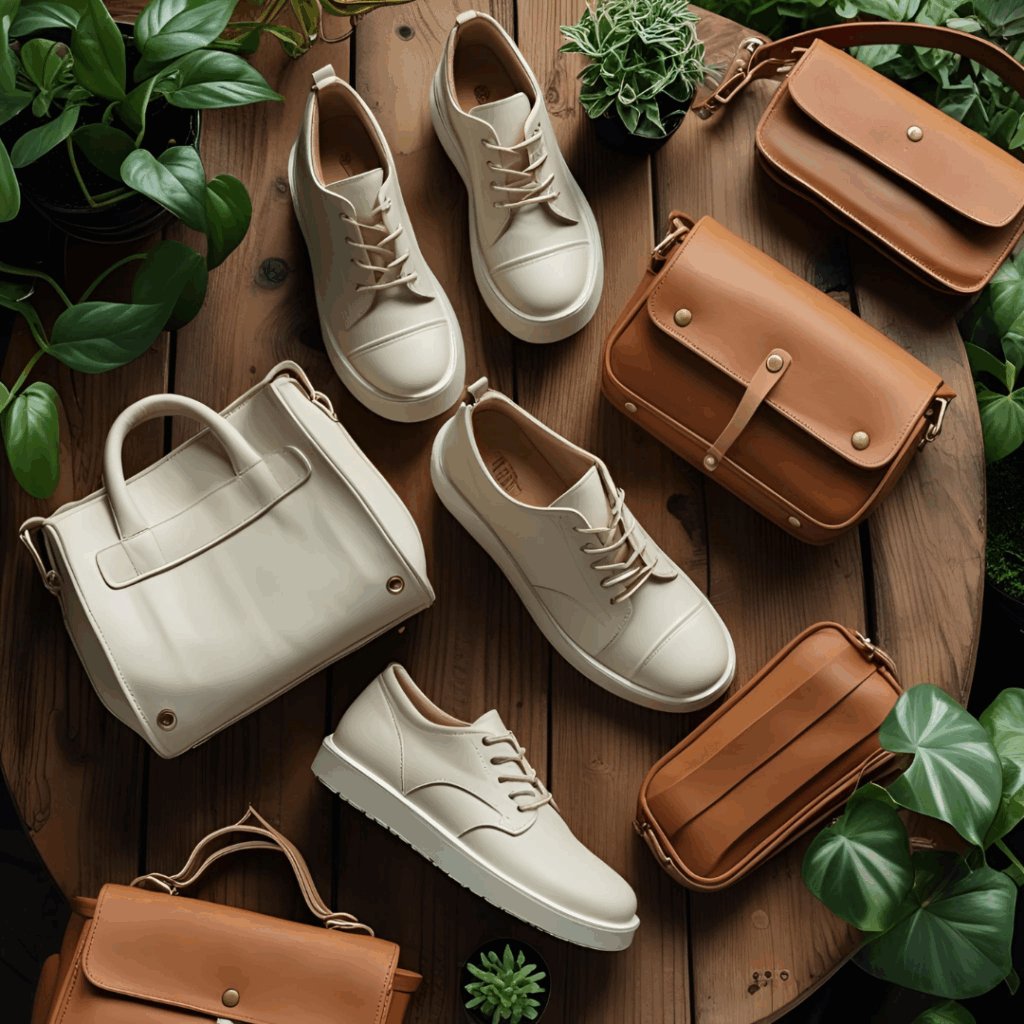The term “vegan leather” has gained traction in the fashion industry as an ethical and conscious alternative to traditional leather. But with growing popularity comes confusion, misinformation, and common myths. Is vegan leather always eco-friendly? Does it last as long as animal leather? Is it all just plastic?
In this post, we’ll uncover the biggest myths and truths about vegan leather—with updated facts, practical examples, and valuable insights to help you make choices that align with your values, whether they’re environmental, ethical, or style-driven.
What is Vegan Leather?
Vegan leather is any alternative material to traditional leather that contains no animal-based ingredients in its composition or manufacturing process. It can be made from various sources:
- Synthetic: Such as polyurethane (PU) and polyvinyl chloride (PVC).
- Natural/Biological: Derived from plants (like cactus, pineapple, apple, grape) or fungi (like mushroom mycelium).
Its main differentiator and primary benefit lie in respecting animal rights—eliminating cruelty from the production chain. However, its sustainability and performance remain hotly debated topics—leading us to the main myths and facts about this innovative material.

🟡 Myth 1: “Vegan leather is always sustainable”
Partly True
This is a nuanced issue. Not all vegan leather is inherently sustainable. Many options still use petroleum-based plastics like PU and PVC. While these don’t involve animal cruelty, they have a significant environmental impact in terms of production and disposal.
On the bright side, the industry is rapidly evolving with the creation of plant-based and bio-based leathers that are much more eco-friendly—some even biodegradable. Notable examples include:
- Piñatex – Made from pineapple leaf fibers, a by-product of the harvest.
- Desserto – Made from cactus, requiring very little water and no toxic chemicals.
- AppleSkin – Created from apple juice industry waste, reducing food waste.
- Mylo – Grown from mushroom mycelium, aiming to be a fully biodegradable option.
🛒 Pro Tip: Always check the product’s composition and look for eco-certifications or labels verifying its ethical and sustainable origins.
❌ Myth 2: “Vegan leather is just cheap plastic”
False
This widespread belief is outdated. While some low-cost vegan products may use basic PU, the market is quickly evolving.
Today, high-tech and premium vegan leathers are available, boasting impressive textures, durability, and aesthetics—sometimes even superior to animal leather. Luxury fashion brands like Stella McCartney, Gucci, and Balenciaga are already using sophisticated vegan alternatives in their collections, proving that ethics, sustainability, and cutting-edge design can go hand in hand.
🟡 Myth 3: “Vegan leather doesn’t last”
Partly True
Durability depends heavily on the type and quality of the vegan leather. Cheaper synthetic versions can indeed peel or crack, especially under extreme heat or humidity.
However, high-performance and plant-based leathers like cactus (Desserto) and apple (AppleSkin) have demonstrated excellent resistance and long lifespans.
Key factors that impact durability include:
- Material quality – Innovative bases are designed for resilience.
- Manufacturing process – Advanced techniques ensure longevity.
- Proper care – Like animal leather, vegan leather benefits from protection against sunlight, excess moisture, and needs correct cleaning.
❌ Myth 4: “Animal leather is more eco-friendly because it’s a meat industry by-product”
False
Although leather is technically a by-product of the meat industry, that doesn’t automatically make it sustainable. The tanning process is notoriously toxic and polluting, involving:
- Hazardous chemicals – Like chromium, a heavy metal harmful to both people and the environment.
- Huge water consumption – Massive water usage in leather production.
- Toxic waste – Dangerous residues that are expensive and difficult to manage.
Plus, the livestock industry itself has major environmental consequences—deforestation, methane emissions, and heavy land and water use.
By contrast, plant-based or recycled vegan leathers usually have a much smaller ecological footprint—especially when produced responsibly.
❌ Myth 5: “Vegan leather isn’t stylish or varied”
False
Nothing could be further from the truth. Vegan leather now comes in a wide array of textures, colors, finishes, and styles—from rustic to luxurious.
Today, many major and indie brands in footwear, bags, clothing, and even car interiors are investing heavily in vegan leather innovations. Notable brands include:
- Von Holzhausen – Known for its high-tech “Technik-Leather.”
- Desserto Cactus Leather – A versatile and stylish option used by global designers.
- Nuuwaï (Germany) – Creates sleek handbags from apple juice industry waste.
- Stella McCartney – A global icon in luxury vegan and sustainable fashion.
Myth 6: “Vegan leather is always cheaper”
Partly True
Basic synthetic vegan leathers are generally more affordable than animal leather. However, high-quality and plant-based vegan leathers can be just as expensive—or even more—due to:
- Cutting-edge technologies – These materials involve advanced research and production.
- Ethical production – Often made under strict environmental and fair-labor conditions, which add to the cost.
💡 The true value lies not just in price—but in origin, impact, and purpose.
❌ Myth 7: “There’s no certification for vegan leather”
False
Several reliable certifications ensure that a product is cruelty-free and/or sustainably made:
- PETA-Approved Vegan – Confirms the product has no animal ingredients or testing.
- Vegan Society Trademark – A globally recognized vegan certification.
- Global Recycled Standard (GRS) – Ensures the product contains recycled content and meets social and environmental criteria.
- OEKO-TEX – While not vegan-specific, certifies that textiles (including vegan ones) are free from harmful substances.
These labels help consumers identify genuinely ethical and sustainable products.

Vegan leather is a promising step forward for those wanting to align fashion choices with ethical and environmental values. While some synthetic materials still pose sustainability challenges, technology is advancing, offering safe, durable, and planet-friendly alternatives to traditional leather.
By debunking these myths, you gain the power to make informed, conscious decisions—paving the way for a cruelty-free, stylish future.
💬 Have you tried vegan leather products? Which materials do you like best? Share your experience in the comments!
🔁 Loved this article or learned something new? Send it to someone looking for better fashion choices!







